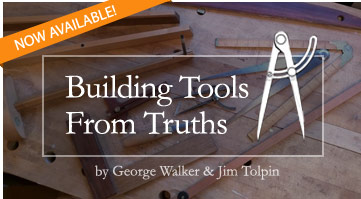A book only needs two things to get written. It begins with questions. Maybe it’s just one big question like “How did our ancestors solve all those design puzzles with a few sticks and a string?” Or even better, a whole kennel full of questions like a pack of beagles eager to get out and play. That’s one side of the equation. A book also needs someone curious enough to dig in and sort through the questions and find the treasure hidden in plain sight. That’s the short version of how Tolpin and I have worked together on book projects in the past. That, and we get together across a kitchen table and consume large amounts of coffee washed down with an occasional raspberry pie.
It was in one of those marathon sessions about eight years ago that Jim first shared with me questions he was exploring about cottages. At first I was a bit confused because he’d already written an opus on cottages that was an extraordinary success. But as he shared his ideas I began to catch on that his first book “The New Cottage Home” answered the “what” questions about these iconic dwellings. He was now asking “why” questions. Both of us got excited because why questions are more elusive and packed with meaning. Usually in the world of building and design, what questions focus on the functional side of design i.e. this rafter needs to be this size to span such and such a space. Why questions are more (slippery) abstract and tend to address aesthetic issues and require judgment as well as listening to that inner voice that reaches out into the unknown. Questions like – why are we drawn to a cottage, often a simple humble dwelling? Why do they give us a feeling safety and delight?
Now he’s pulled his thoughts together in “The Seven Secrets of Cottage” and found some surprising and inspiring answers. And the beauty of coming to grips with “why” questions is this: “Why” questions are universal. Of course you can use the answers to design your own cottage. But you can also use that knowledge to remodel your private study in your home or that dream workshop or garden shed you have on your bucket list. It will also equip you to unpack great examples of those secrets when you encounter them in buildings you admire. Jim put a lot of thought into this and it offers keen insight.
George R. Walker



